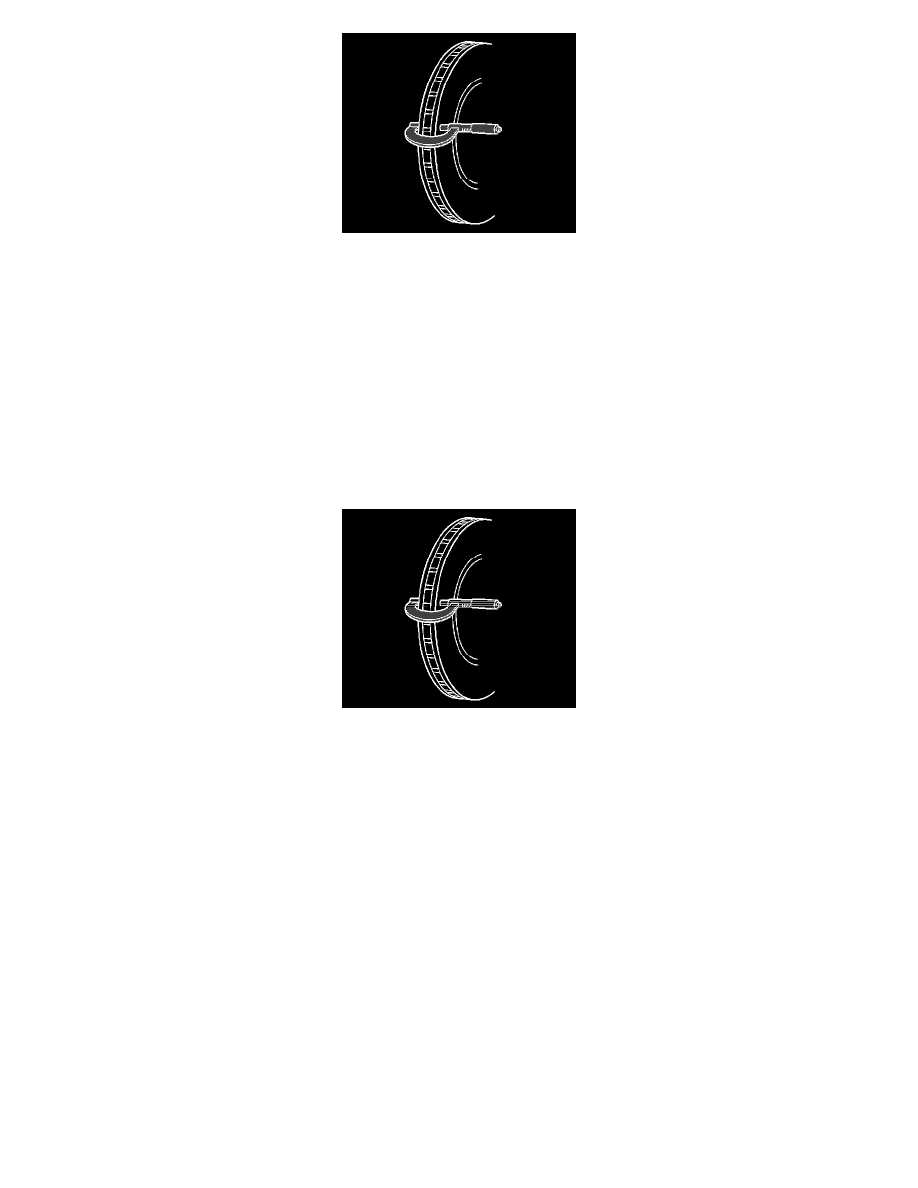Equinox AWD V6-3.4L VIN F (2006)

5. Using a micrometer calibrated in thousandths-of-a-millimeter, or ten-thousandths-of-an-inch, measure and record the scoring depth of any grooves
present on the rotor friction surfaces.
6. Compare the groove scoring depth recorded to the following specification:
Brake rotor maximum allowable scoring: 1.50 mm (0.059 inch)
7. If the brake rotor scoring depth exceeds the specification, or if an excessive amount of scoring is present, the rotor requires refinishing or
replacement.
Brake Rotor Thickness Measurement
Brake Rotor Thickness Measurement
Caution: Refer to Brake Dust Caution in Service Precautions.
1. If the inboard friction surface of the brake rotor is not accessible, reposition and support the caliper with the brake pads.
2. Clean the friction surfaces of the brake rotor with denatured alcohol, or an equivalent approved brake cleaner.
3. Using a micrometer calibrated in thousandths-of-a-millimeter, or ten-thousandths-of-an-inch, measure and record the thickness of the brake rotor at
4 or more points, evenly spaced around the rotor. Ensure that the measurements are only taken within the friction surfaces and that the micrometer
is positioned the same distance from the outer edge of the rotor, about 13 mm (1/2 inch), for each measurement.
4. Compare the lowest thickness measurement recorded to the following specification:
Brake rotor minimum allowable thickness after refinishing: 24.5 mm (0.960 inch)
5. If the lowest thickness measurement of the brake rotor is above the minimum allowable thickness after refinishing specification, the rotor may be
able to be refinished, depending upon surface and wear conditions which may be present.
6. If the lowest thickness measurement of the brake rotor is at or below the minimum allowable thickness after refinishing specification, the rotor may
not be refinished.
7. If the lowest thickness measurement of the brake rotor is at or below the discard thickness specification, the rotor requires replacement.
Brake Rotor Thickness Variation Measurement
Brake Rotor Thickness Variation Measurement
Caution: Refer to Brake Dust Caution in Service Precautions.
Important: Any disc brake rotor that exhibits thickness variation exceeding the maximum acceptable level must be refinished or replaced. Thickness
variation exceeding the maximum acceptable level can cause brake pulsation.
1. If the inboard friction surface of the brake rotor is not accessible, reposition and support the caliper with the brake pads.
2. Clean the friction surfaces of the brake rotor with denatured alcohol, or an equivalent approved brake cleaner.
